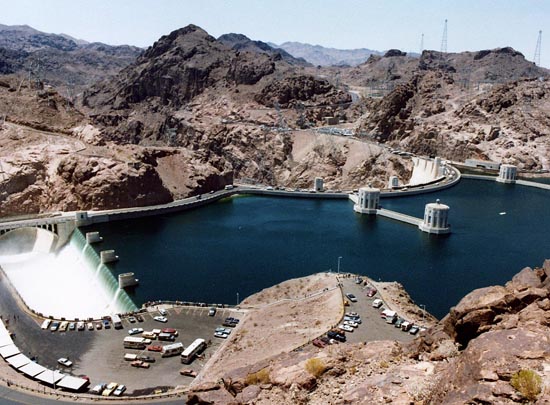
By Todd C. Frankel | The Washington Post
INSIDE HOOVER DAM — The floor rumbled under Mark Cook. His legs vibrated as he stood in a tunnel tucked into the thick base of Hoover Dam, 430 feet below the tourists looking out over Lake Mead. Beneath him, water roared through steel pipes 13 feet tall. Nearby, heavy turbines hummed with mechanical intensity.
“We’re moving some good water today,” Cook, the dam manager, said proudly.
Moving water means making electricity. But the drought is making that harder to do. The lack of water has put a serious crimp in the hydroelectric line at Hoover Dam and other power plants across the West, limiting an inexpensive and pollution-free energy source that once was considered endless.











